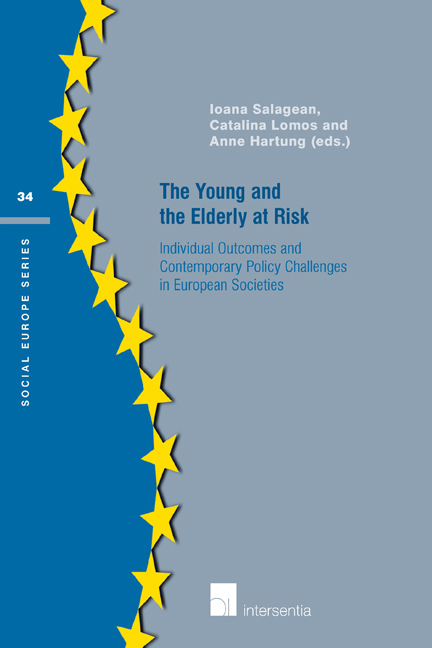 The Young and the Elderly at Risk
The Young and the Elderly at Risk Published online by Cambridge University Press: 13 December 2017
ABSTRACT
Youth unemployment has increased by a dramatic 7.1 percentage points from 15.9% to 23% between 2002 and 2012 in the Euro area (Eurostat 2013). As unemployment and social exclusion are highly correlated and the labour market integration of the young cohorts determines a society's productivity and financial stability in the medium-term future, tackling the problem of youth unemployment is key of making today's welfare states sustainable. Germany, with one of the lowest youth unemployment rates in Europe, is therefore an interesting case. This contributes to the understanding of the factors that facilitate and hamper a successful labour market entry of young job seekers (below age 36), and especially those with a migration background. Drawing on the German Socio- Economic Panel (SOEP), it analyses school-to-work transitions with competing risk regression focusing on youth with and without migration background and discusses in particular the mediating impact of vocational training on a successful labour market entry. It is hypothesised that particular groups of migrant school leavers are hampered in terms of labour market entry due to access barriers to vocational training, compared to other migrant or non-migrant groups. The results endorse the importance of human capital in general and the role of vocational training in particular. The returns to vocational training are similar for all the ethnic groups, i.e. Germans and non-natives, investigated here. Specifically, Turks constitute the most disadvantaged group of school leavers, and this group only achieves parity with their German counterparts when sharing a similar parental background.
Keywords: School-to-work transition, vocational training, migrants, SOEP
INTRODUCTION
Youth unemployment is currently one of the biggest topics discussed on the European and national agendas. In order to reach the ambitious Europe 2020 employment target of 75% for women and men aged 20–64, increasing employment of young people is a key strategy. This seems especially challenging in view of the fact that youth unemployment has reached an alarming level during the crisis: youth unemployment increased from 15.5% to 23.1% over a five-year period in the Euro area (17 EU countries, 2007–2012; Eurostat 20131). Youth employment seems to function as a buffer in times of economic hardship (Buchholz and Kurz 2005).
To save this book to your Kindle, first ensure [email protected] is added to your Approved Personal Document E-mail List under your Personal Document Settings on the Manage Your Content and Devices page of your Amazon account. Then enter the ‘name’ part of your Kindle email address below. Find out more about saving to your Kindle.
Note you can select to save to either the @free.kindle.com or @kindle.com variations. ‘@free.kindle.com’ emails are free but can only be saved to your device when it is connected to wi-fi. ‘@kindle.com’ emails can be delivered even when you are not connected to wi-fi, but note that service fees apply.
Find out more about the Kindle Personal Document Service.
To save content items to your account, please confirm that you agree to abide by our usage policies. If this is the first time you use this feature, you will be asked to authorise Cambridge Core to connect with your account. Find out more about saving content to Dropbox.
To save content items to your account, please confirm that you agree to abide by our usage policies. If this is the first time you use this feature, you will be asked to authorise Cambridge Core to connect with your account. Find out more about saving content to Google Drive.